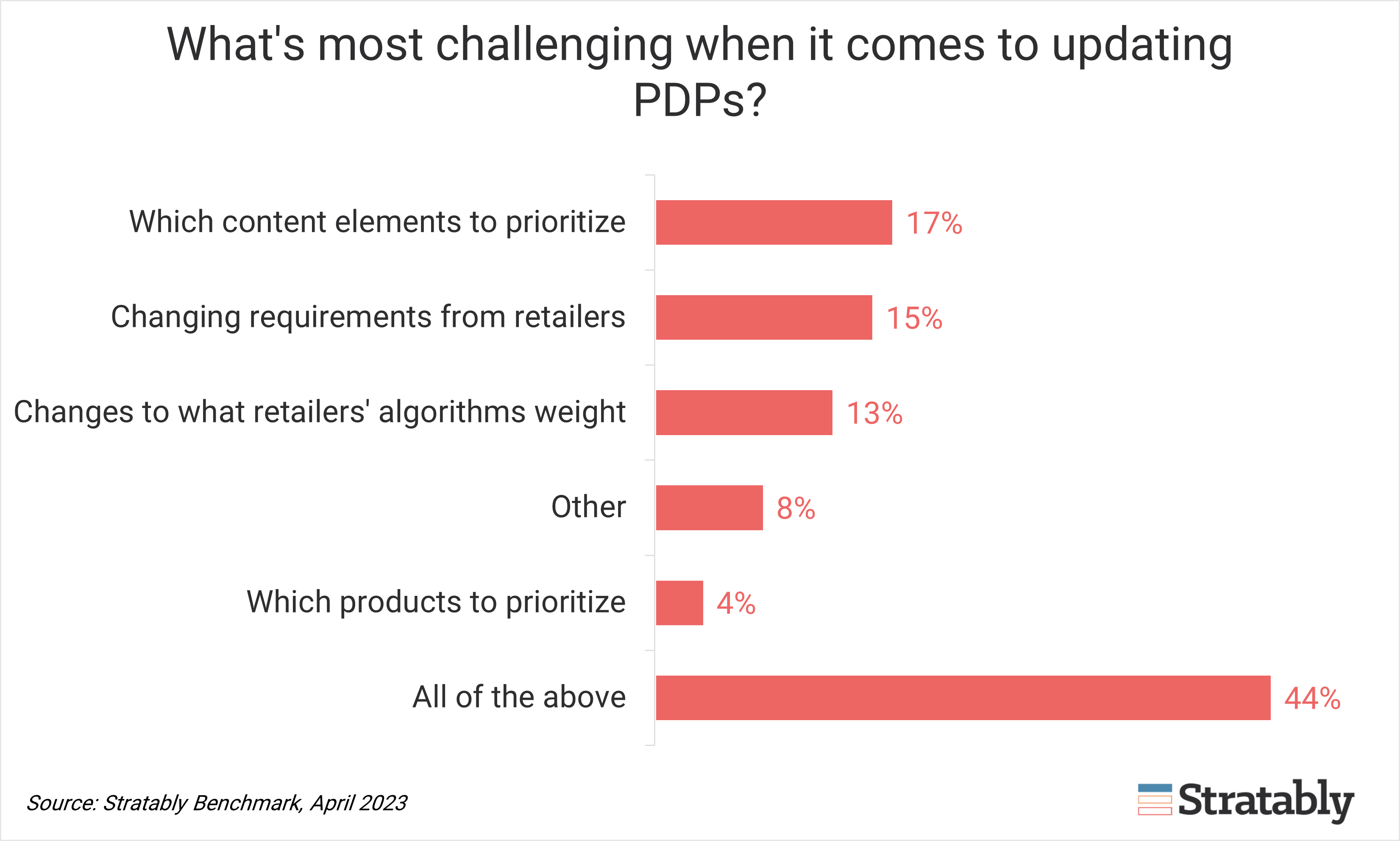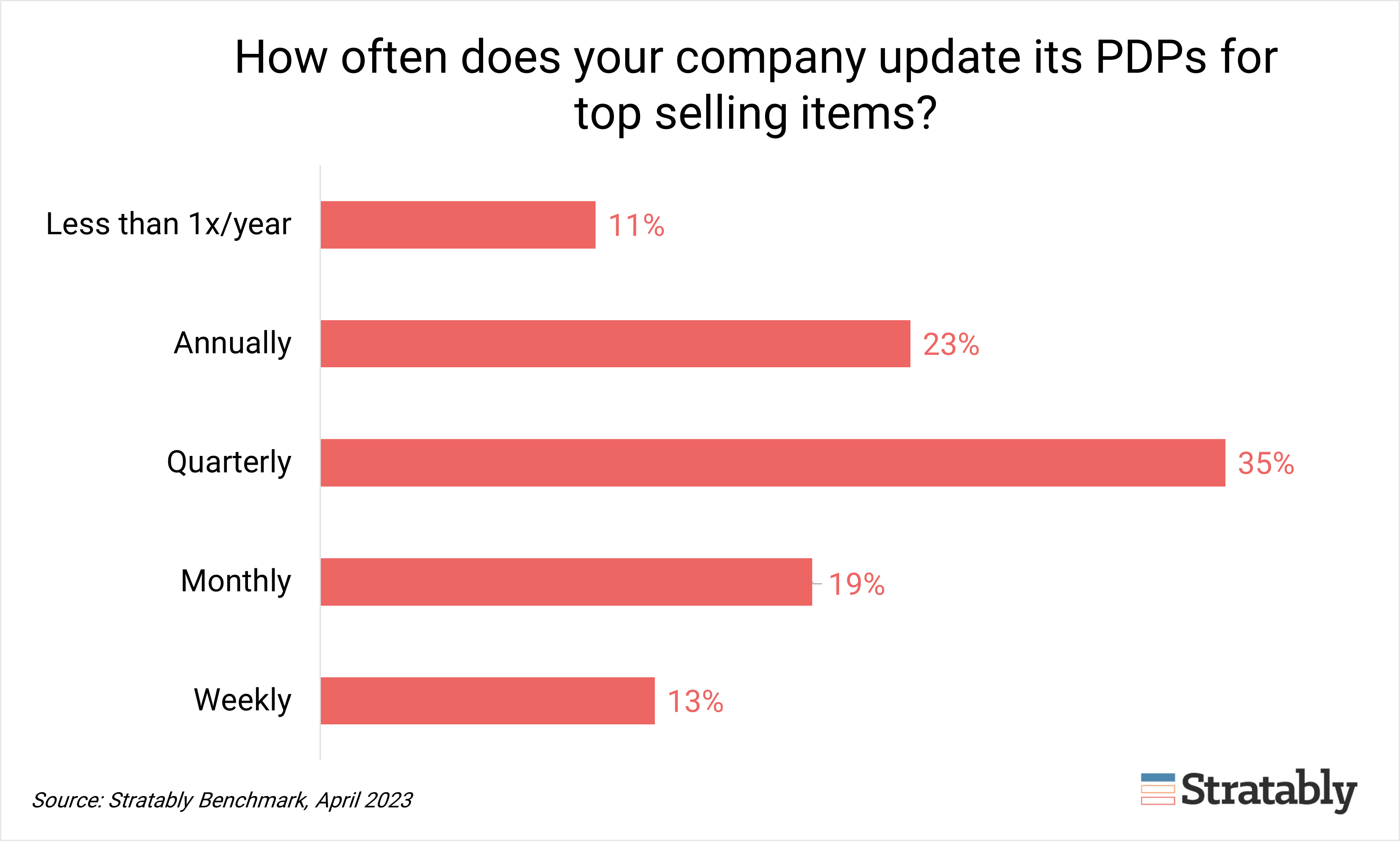April 25, 2023
Stratably hosted Lauren Livak from The Digital Shelf Institute to dive into different PDP content strategies for consumer brands struggling to maintain their portfolio of SKUs across many retail customers.
Watch The Recording Here
Challenges are multi-faceted when it comes to PDP content
Large consumer brands must manage broad portfolios with hundreds or even thousands of SKUs sold across a number of different retailers, all of which have different requirements, along with varying degrees of growth and profit potential.
It’s incredibly important to get PDPs right - from the presentation:
- 80% of shoppers check the internet before deciding where and what to buy
- 62% of offline purchases are influenced by online
- 86% of consumers are unlikely to buy a product after experiencing bad product information
- 1 in 3 carts abandoned are because of poor product descriptions on the PDP
Developing an effective strategy means “A plan of action for every SKU in your portfolio with a clear picture on profitability and level of content that needs to be created and syndicated to retailers”.
This is easier said than done as our pre-webinar benchmarking highlighted brands find it difficult to know what elements of PDPs to update (titles, photos, bullets, etc.), in addition to staying on top of retailers’ changing requirements and algorithmic weights.
Fortunately, the industry is largely progressing beyond a “set it and forget it” mentality common a few years back. Today, 57% of brands we benchmarked indicate they are updating PDPs for top selling items at least quarterly. We often see updates triggered by seasons, changing retailer requirements, and/or part of a regularly scheduled process.
We sat down with Lauren to hear her thoughts on how consumer brands can apply a realistic framework grounded in growth and profitability for prioritizing both SKUs and retailers that are most important to accomplishing their business goals.
Here’s what we found most interesting from the live session:
- Whether it’s operationally getting products to the end consumer or working as a team on retail media, eCommerce is a cross-functional game. This is true of product content too. For instance, it doesn’t matter if your content is spectacular if you’re not in stock, or if the SKUs you focus on updating are not the same as the ones your sales and marketing team is pushing. Lauren recommended all parts of the organization that tie into content need to be aligned on the go forward strategy. Educating the organization on this strategy and evangelizing the need for a cross-functional support is critical.
- Brands should work with their revenue growth management team to understand the ~20% of SKUs that drive the most revenue and profitability for their business. These SKUs can then be prioritized for content excellence. This is a necessary step to avoid over-extending the organization by trying to update all SKUs equally.
- SKUs can be sorted into three tiers for prioritizing updates. Tier 1 SKUs are the big financial drivers and should receive regular content refreshes. Tier 2 SKUs should see periodic refreshes with the goal being to win key moments. Tier 3 SKUs should meet minimum requirements and can be updated infrequently.
- Not all SKUs should be sold online! Many consumer brands have significant portions of their online portfolio filled with items that simply won’t be profitable through an eCommerce model. These items should move to the bottom of the list from a PDP priority standpoint if sold online at all.
- Content options are expected to grow at each retailer in the foreseeable future. Depending on the site, that could mean more imagery, more videos, more enhanced content. This implies a growing potential for updating content, supporting the need to prioritize even further.
- One trend to watch will be more personalized content options, such as by geography or product complements.
Watch The Recording Here





